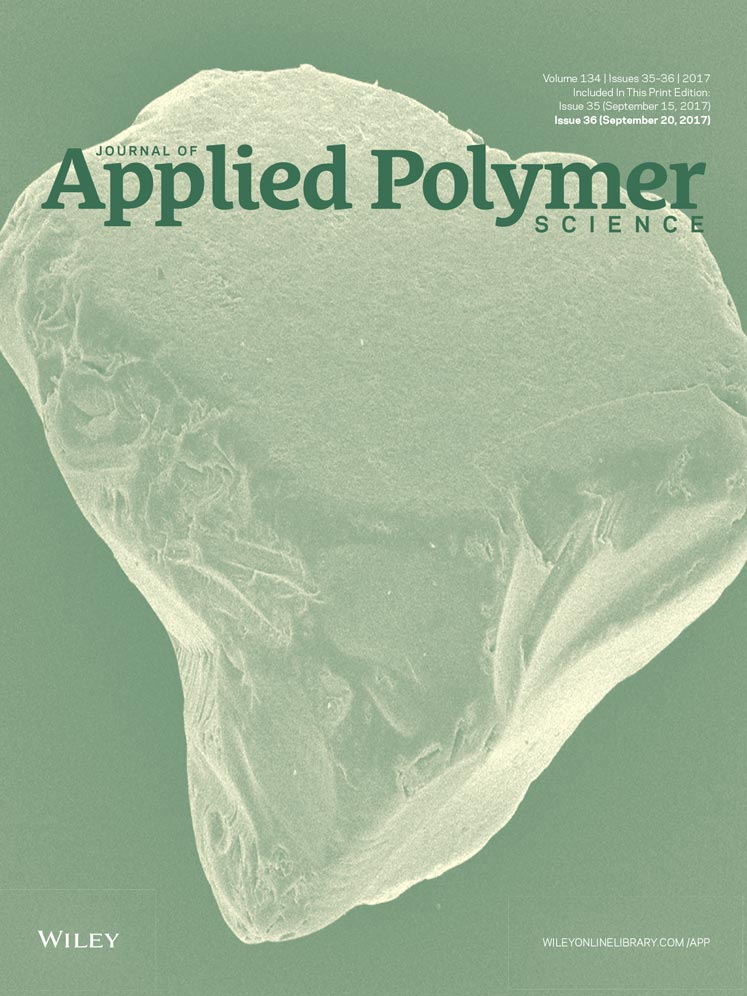The thermal stability investigation of microencapsulated ammonium polyphosphate/siloxane-modified epoxy resin composites
ABSTRACT
In this investigation, epoxy resin composites containing phosphate and silicone were prepared from microencapsulated ammonium polyphosphate (MFAPP) and poly(methylphenyl siloxane) (PMPS). Silicone-containing epoxy (E-S) copolymers were gained by the grafting reaction between OCH3 of PMPS and OH of E51. And, a fixed weight of MFAPP was introduced to epoxy systems via the physical blending method. The chemical structure of the E-S copolymer was determined by Fourier transform infrared spectroscopy (FTIR) and 1H-NMR. The impact testing results revealed that the impact toughness was improved slightly. The thermogravimetric analysis (TGA) results demonstrated that the thermal degradation property in high temperature region and solid residue yield at 800 °C were enhanced remarkably with increasing PMPS content, whether the testing atmosphere was in nitrogen or oxygen. Moreover, an obvious synergistic effect of silicon and phosphorus on promoting the thermo-oxidative degradation stability and solid residue at 800 °C was proved. Furthermore, the scanning electron microscope micrographs and FTIR result of residual charred crusts of EA-S systems after the TGA testing in air manifested that the bubbled charred layer and silicon- and phosphorus-containing residue took chief responsibility for thermo-oxidative degradation property and solid residue yield. So the MFAPP/siloxane-modified epoxy resin composites have a significant development prospect in high-temperature resistant organic adhesives and coatings. © 2017 Wiley Periodicals, Inc. J. Appl. Polym. Sci. 2017, 134, 45272.




